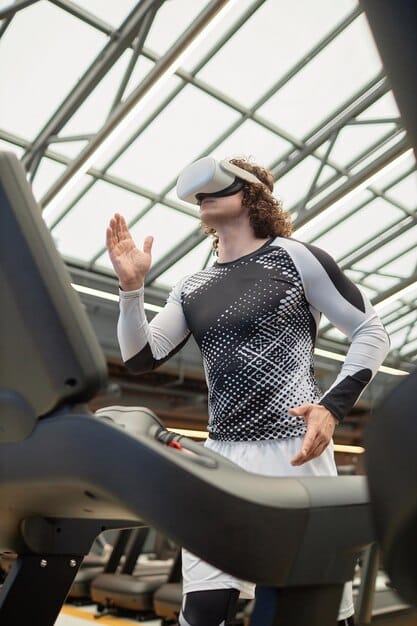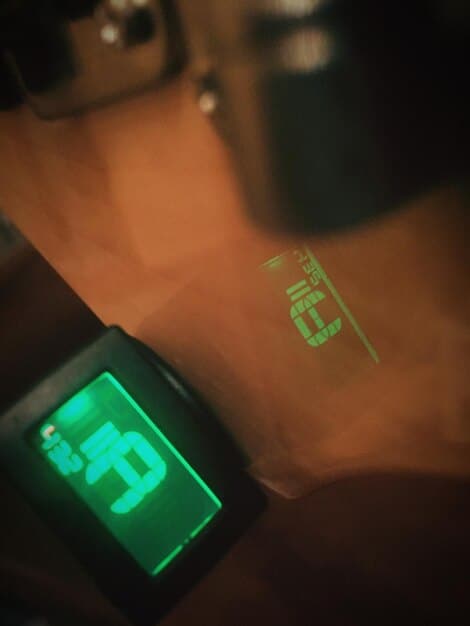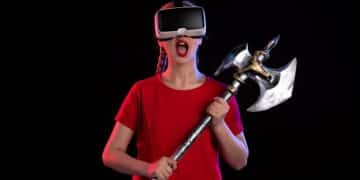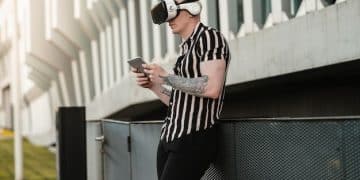VR Treadmills: Burn 500 Calories Per Hour? The Reality

VR treadmills can enhance workouts, but burning 500 calories per hour depends on exercise intensity, individual metabolism, and the VR experience chosen, making it a variable outcome.
Are you curious about the calorie-burning potential of VR treadmills? The promise of shedding 500 calories per hour while gaming sounds enticing, but let’s explore the reality behind this claim. Are VR Treadmills: Can You Really Burn 500 Calories Per Hour? Keep reading to find out!
VR Treadmills: Unveiling the Calorie Burning Potential
VR treadmills have emerged as a novel way to combine gaming with exercise, offering an immersive experience that can make workouts more engaging. However, the claim that one can burn 500 calories per hour using these devices requires a closer look. Understanding the factors that influence calorie burn during VR treadmill workouts is key to setting realistic expectations.
The amount of calories burned while using a VR treadmill isn’t fixed; it varies based on several factors. These include the intensity of the workout, the individual’s metabolic rate, and the specific VR experience. To better understand what to expect, let’s dive into the details.
Factors Affecting Calorie Burn on VR Treadmills
Several elements play a significant role in determining how many calories you’ll burn during a VR treadmill workout.
- Workout Intensity: A higher intensity workout, such as running or sprinting in the virtual world, will naturally burn more calories than a leisurely walk.
- Metabolic Rate: Each person’s metabolism is different. Factors like age, weight, gender, and overall health influence how efficiently your body burns calories.
- VR Experience: The type of game or simulation you’re engaged in can impact calorie burn. More active games that require constant movement will lead to a higher calorie expenditure.
- Duration of Use: Similar to traditional exercise, the longer you spend on the VR treadmill, the more calories you will burn.
Taking these factors into account can help you tailor your VR treadmill experience to meet your fitness goals. Keep in mind that individual results will vary.

The Science Behind Calorie Expenditure in VR Exercise
The potential for VR treadmills to enhance physical fitness is rooted in established exercise principles. However, the integration of virtual reality adds an additional layer of psychological engagement that can impact perceived exertion and motivation. This section explores how VR influences the exercise experience.
Understanding the underlying science can help consumers make informed decisions about whether VR treadmills are a suitable addition to their fitness regimen.
How VR Impacts Exercise Perception
Virtual reality has the ability to alter one’s perception of time and effort during exercise. This can lead to a more enjoyable and potentially more effective workout.
- Distraction from Fatigue: VR can distract users from the discomfort and fatigue often associated with physical exercise, allowing them to work out for longer periods.
- Increased Motivation: Immersive environments and interactive gameplay can make exercise feel less like a chore and more like a game, boosting motivation.
- Enhanced Engagement: The combination of visual and auditory stimuli can create a more engaging workout experience, further diverting attention from physical strain.
Despite these benefits, it’s important to manage expectations. Calorie burn is still dictated by physical exertion and physiological factors, even when VR is involved.
Comparing VR Treadmill Calorie Burn to Other Activities
To contextualize the claim of burning 500 calories per hour on a VR treadmill, it’s helpful to compare its potential calorie expenditure to that of other common physical activities. This comparison can highlight the effectiveness of VR treadmill workouts.
Understanding how it stacks up against other forms of exercise can help individuals determine if VR treadmill workouts align with their fitness objectives and preferences.
Calorie Burn: VR Treadmills vs. Traditional Exercise
A detailed look at how different activities compare in terms of average calorie burn per hour.
- Running: Depending on the intensity and individual factors, running can burn between 600 to 800 calories per hour.
- Cycling: Moderate cycling typically burns around 500 to 700 calories per hour.
- Walking: A brisk walk can burn approximately 300 to 400 calories per hour.
These numbers suggest that VR treadmills can align with the calorie-burning potential of moderate cycling, but might fall short of high-intensity running, depending on how the treadmill is used. It’s important to note that these are averages, and the actual calorie burn will vary.

Maximizing Calorie Burn: Tips for Effective VR Treadmill Workouts
To achieve the highest possible calorie burn while using a VR treadmill, it’s important to implement strategies similar to those used in traditional exercise. These strategies involve optimizing workout intensity and duration.
With the right approach, users can maximize their calorie expenditure and make the most of their VR treadmill experience.
Strategies for Boosting VR Treadmill Calorie Burn
Simple techniques that can significantly impact your workout effectiveness.
- Incorporate Interval Training: Alternating between high-intensity bursts and periods of rest or lower intensity can boost calorie burn and improve cardiovascular fitness.
- Choose Active VR Games: Games that require constant movement, such as running, jumping, and dodging, will naturally burn more calories than those that are more sedentary.
- Increase Workout Duration: Gradually increasing the length of your VR treadmill sessions can help you burn more calories over time.
By applying these techniques, VR treadmill users can enhance their workouts and work towards achieving their desired fitness outcomes.
Potential Downsides and Limitations of VR Treadmill Calorie Burn
While VR treadmills offer enticing benefits, they also come with potential drawbacks and limitations. Being aware of these challenges is important for anyone considering incorporating them into their fitness routine.
Understanding these downsides can help individuals make informed decisions and mitigate potential issues.
Challenges to Consider
Factors that can hinder the effectiveness of VR treadmill workouts.
- Motion Sickness: Some users may experience motion sickness due to the discrepancy between visual input and physical movement.
- Equipment Cost: VR treadmills can be expensive, which may make them inaccessible to some individuals.
- Space Requirements: These devices often require a significant amount of space, which may be an issue for those living in smaller homes or apartments.
Despite these limitations, the unique benefits of VR treadmills may outweigh the drawbacks for many users, making them a valuable addition to their fitness regimen.
Future of VR Treadmills and Fitness Technology
The integration of virtual reality with exercise equipment is a rapidly evolving field. As technology advances, VR treadmills are likely to become more affordable, accessible, and effective.
Staying informed about emerging trends can help enthusiasts stay ahead of the curve and make the most of these developments.
Emerging Trends in VR Fitness
Exciting advancements that may shape the future of VR exercise.
Future VR treadmills could incorporate enhanced sensors for more accurate motion tracking, haptic feedback to simulate different terrains, and personalized workout programs based on individual fitness levels and goals. This continuous evolution promises to enhance the immersive experience.
As VR technology becomes more sophisticated, expect to see even more innovative applications in the fitness world.
| Key Point | Brief Description |
|---|---|
| 🔥 Calorie Burn | Varies with intensity and individual factors. |
| 🎮 VR Immersion | Distracts from fatigue, boosts motivation. |
| 💰 Cost & Space | Can be expensive and needs significant space. |
| 🚀 Future Trends | Advancements in sensors and personalized programs. |
Frequently Asked Questions
▼
Yes, VR treadmills can contribute to weight loss by increasing physical activity and calorie expenditure. Combined with a balanced diet, they can be an effective tool.
▼
VR treadmills can be adapted for various fitness levels. Many models offer adjustable speed and resistance settings to accommodate beginners to advanced athletes.
▼
VR enhances the experience by immersing users in engaging virtual environments, making workouts feel less repetitive and more enjoyable, which can boost motivation.
▼
Besides calorie burn, benefits include improved cardiovascular health, increased muscle strength, enhanced mood, and better overall physical conditioning.
▼
The cost varies widely, ranging from a few thousand dollars for basic models to tens of thousands for high-end, professional-grade treadmills with advanced features.
Conclusion
In conclusion, while the claim of burning exactly 500 calories per hour on a VR treadmill might be an oversimplification, the potential for significant calorie burn and enhanced workout experiences is undeniable. By considering individual factors, employing effective workout strategies, and staying informed about technological advancements, users can leverage VR treadmills to achieve their fitness goals and enjoy the process.





